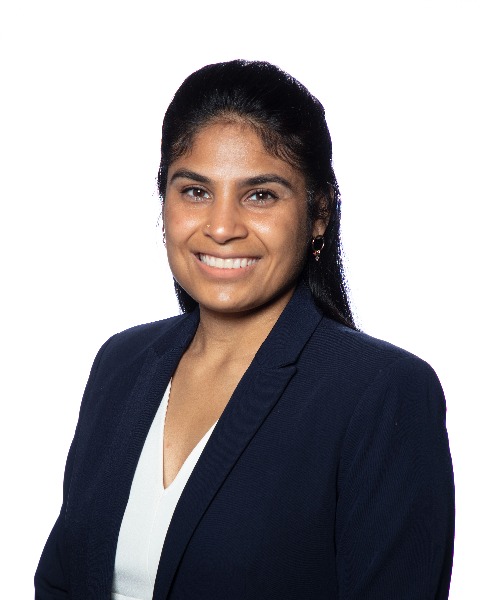Health Equity/Social Determinants of Health
Category: Abstract Submission
Health Equity/Social Determinants of Health VI
193 - Pediatric Anxiety and Cortisol concentrations from Experiencing Stress (PACES) Study in Immigrant and Non-immigrant Children
Monday, April 25, 2022
3:30 PM - 6:00 PM US MT
Poster Number: 193
Publication Number: 193.413
Publication Number: 193.413
Mónica O. Ruiz, Stanford University School of Medicine, Palo Alto, CA, United States; Kanwaljeet S. Anand, Stanford University School of Medicine, Stanford, CA, United States; Cynthia R. Rovnaghi, Lucile Packard Children's Hospital Stanford, Palo Alto, CA, United States

Mónica O. Ruiz, MD, MPH
Clinical Fellow
Stanford University School of Medicine
Palo Alto, California, United States
Presenting Author(s)
Background: Adverse childhood experiences (ACEs) affect 34.8 million children and are associated with increased risks of chronic diseases and mental illness. ACEs are strongly associated with anxiety and cortisol dysregulation, but relationships between ACEs and anxiety in children remain poorly understood. Stress biomarker research may advance our understanding of the physiological mechanisms that link ACEs to anxiety and thereby address a major health disparity in marginalized populations.
Objective: The objective of this study is to examine the interplay of ACEs and anxiety by measuring hair cortisol concentrations (HCCs) in immigrant and non-immigrant children.
Design/Methods: We enrolled 36 children aged 9 to 72 months and their parent(s) in a cross-sectional pilot study. Children with psychiatric conditions, developmental delay, history of prematurity, endocrine disorders, chronic medical conditions, scalp conditions, and steroid use were excluded. Hair samples were collected via a contactless method and analyzed using an ELISA assay for hair cortisol. Child anxiety and ACEs scores were based on parent-reported Spences Children’s Anxiety Scale (SCAS) and Adverse Childhood Experiences Questionnaire (ACEQ), respectively. Parental ACEs and resilience scores were also collected. Statistical analyses included unpaired t-tests, linear regression modeling, and correlation analyses.
Results: No significant differences in HCC values, anxiety scores, and ACEs occurred between the immigrant and non-immigrant children. A trend towards greater anxiety among immigrant vs. non-immigrant children (15.6 ± 12.5 vs. 9.2 ± 8.9, p=0.087) was noted. Immigrant mothers’ ACEs correlated with their own HCCs and their child’s HCCs (r=0.45; p=0.062), which indicates an association between maternal ACEs, stress and their child’s stress. Multivariable linear regression revealed that maternal resilience and HCCs explained 81% variability in the child’s HCC (adjusted R2=0.81, p< 0.0001), which illustrates the critical role of maternal stress and resilience in regulating their child's cortisol from marginalized communities.Conclusion(s): Our pilot data suggest that ACEs-related interventions should consider enhancing maternal resilience among immigrant populations. Study limitations include our cross-sectional study design and small sample size, which resulted in a narrow ACEs distribution. Our contactless approach and HCC measurements provide tools to support population-based, longitudinal studies to further understand the association between ACEs and childhood anxiety in marginalized communities.
Pediatric Anxiety and Cortisol concentrations from Experiencing Stress (PACES) Study in Immigrant and Non-immigrant ChildrenRuiz MasterCV.pdf
Objective: The objective of this study is to examine the interplay of ACEs and anxiety by measuring hair cortisol concentrations (HCCs) in immigrant and non-immigrant children.
Design/Methods: We enrolled 36 children aged 9 to 72 months and their parent(s) in a cross-sectional pilot study. Children with psychiatric conditions, developmental delay, history of prematurity, endocrine disorders, chronic medical conditions, scalp conditions, and steroid use were excluded. Hair samples were collected via a contactless method and analyzed using an ELISA assay for hair cortisol. Child anxiety and ACEs scores were based on parent-reported Spences Children’s Anxiety Scale (SCAS) and Adverse Childhood Experiences Questionnaire (ACEQ), respectively. Parental ACEs and resilience scores were also collected. Statistical analyses included unpaired t-tests, linear regression modeling, and correlation analyses.
Results: No significant differences in HCC values, anxiety scores, and ACEs occurred between the immigrant and non-immigrant children. A trend towards greater anxiety among immigrant vs. non-immigrant children (15.6 ± 12.5 vs. 9.2 ± 8.9, p=0.087) was noted. Immigrant mothers’ ACEs correlated with their own HCCs and their child’s HCCs (r=0.45; p=0.062), which indicates an association between maternal ACEs, stress and their child’s stress. Multivariable linear regression revealed that maternal resilience and HCCs explained 81% variability in the child’s HCC (adjusted R2=0.81, p< 0.0001), which illustrates the critical role of maternal stress and resilience in regulating their child's cortisol from marginalized communities.Conclusion(s): Our pilot data suggest that ACEs-related interventions should consider enhancing maternal resilience among immigrant populations. Study limitations include our cross-sectional study design and small sample size, which resulted in a narrow ACEs distribution. Our contactless approach and HCC measurements provide tools to support population-based, longitudinal studies to further understand the association between ACEs and childhood anxiety in marginalized communities.
Pediatric Anxiety and Cortisol concentrations from Experiencing Stress (PACES) Study in Immigrant and Non-immigrant ChildrenRuiz MasterCV.pdf
